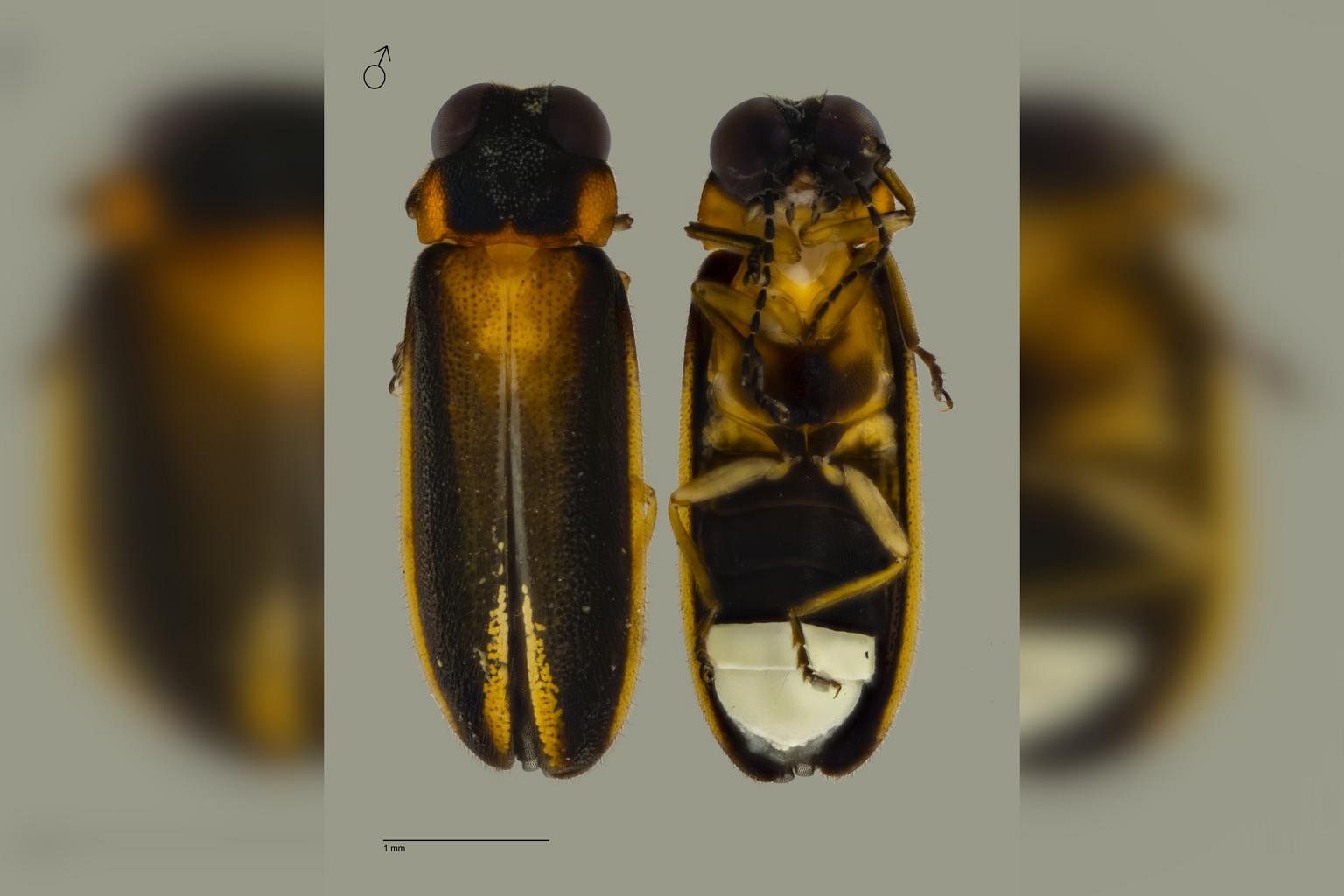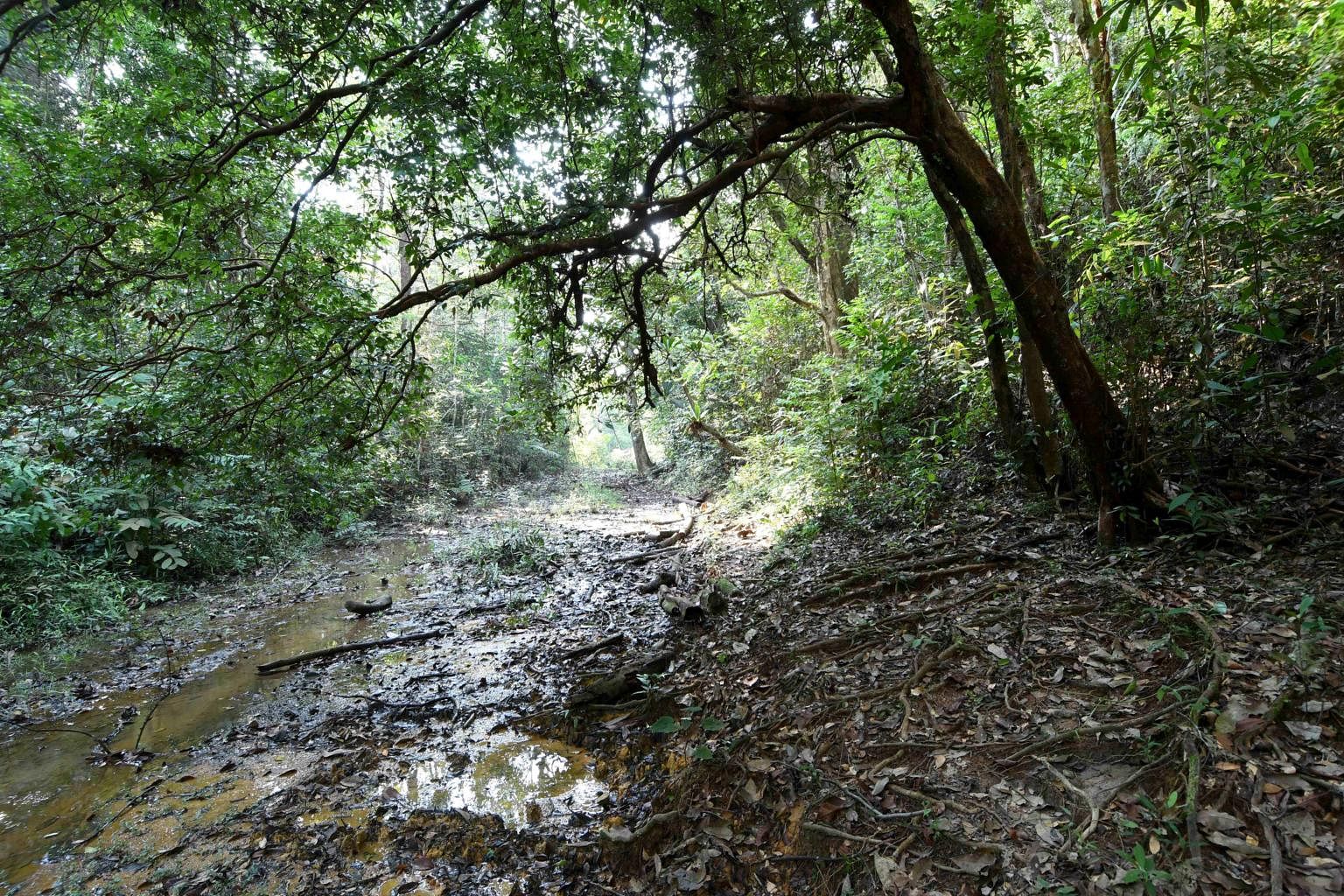New firefly species found, first such discovery here in more than a century
Sign up now: Get ST's newsletters delivered to your inbox

The Singapore firefly (Luciola singapura), which is less than 5mm long, was discovered in the Nee Soon Swamp Forest.
PHOTO: WAN F. A. JUSOH
Ivan Kwee
Follow topic:
SINGAPORE - Researchers here have identified a new species of luminous firefly, the first such discovery made in Singapore since 1909.
The Singapore firefly (Luciola singapura), which is less than 5mm long, was discovered in the Nee Soon Swamp Forest, the last remaining freshwater swamp forest in Singapore.
The team of researchers from the National University of Singapore (NUS) and National Parks Board (NParks) documented the species in a paper published last Thursday (March 4).
Lead researcher Wan Faridah Akmal Jusoh, a research fellow at the Lee Kong Chian Natural History Museum at NUS, said the discovery was interesting because fireflies are rarely documented in freshwater swamp forests.
Dr Wan first learnt of the new species when two specimens of the previously unidentified Singapore firefly were collected during a 2009 nationwide survey of fireflies by NParks.
In 2016, prior to joining the museum, Dr Wan's interest was piqued when she visited its firefly collection and found three similar specimens collected back in 1989.
A year later, Dr Wan joined the museum and arranged for further visits to the swamp forest with NParks, where the team collected additional specimens of the firefly in 2019 after several visits.
It took the researchers two more years of laboratory work and analysis to prove that the Singapore firefly was distinct from 19 other firefly species in the genus Luciola, through intricate dissections and modern DNA techniques.
Dr Wan said: "I like to say that every species has a story to tell. This story is about the Singapore firefly; it has waited for 30 years to finally be named."
The discovery of a new species in a small and highly developed country like Singapore highlights the need for continued biodiversity research here, added Dr Wan.
Mr Lim Liang Jim, group director of NParks' National Biodiversity Centre, said: "The discovery of this new species is very significant to science in Singapore, and it shows the importance of conserving the last freshwater swamp forest here."
The Nee Soon Swamp Forest is located within the Central Catchment Nature Reserve, which is a protected area.

While the firefly species discovered in 1909 has not been sighted since and is believed to be locally extinct, Dr Wan hopes the Singapore firefly will not suffer the same fate.
"We are fortunate that this species is already under a protected area, but we hope more work can be done to protect and sustain this small population from going extinct," she said.

